
Activity Reports
Wakayama Typhoon No 12: Words from the Volunteer Coordinator
November 28, 2011
Peace Boat has just finished two months of emergency relief work in Wakayama Prefecture.
This is an interview with Suzuki Takayuki, who coordinated the activities of volunteers for a total of 1700 working days in the area since September 8.
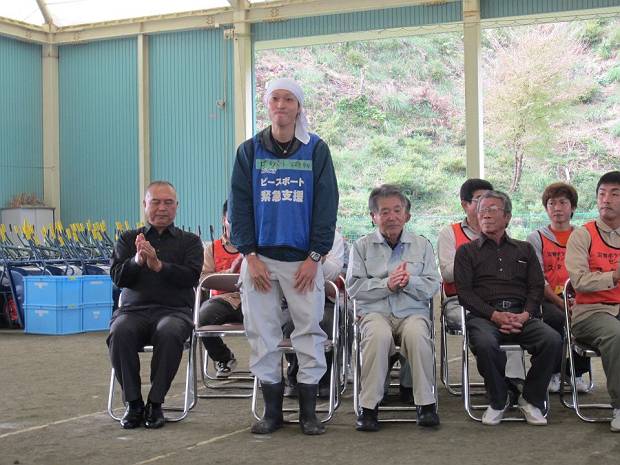
At the Kumanogawa Satellite Volunteer Center Closing Ceremony on November 6, 2011.
Q: Tell us how you feel after 2 months.
A: On November 12, the last day we were volunteering, many people from Shingu City and the local town of Kumanogawa came and made food for us. This relationship was what we had wanted to achieve with the locals, especially since we were outsiders to them. Trust can only be gained little by little, one task at a time. That trust can however be destroyed in an instant. We were always doing our best to avoid such a situation, and the last day made us feel that our work was done for a good cause.

Q: How is the city of Kumanogawa now?
A: The typhoon caused floods and mudslides, so work focused on cleaning up the debris and and digging out what was buried under dirt. We were able to help clean and meet the needs of many houses, schools and other facilities, however we have not helped the forests or fields. There is only so much that can be done with our bare hands, so I expect work using heavy machinery and such will continue. As is the situation in the earthquake-affected Tohoku areas, even though many households and shops can be used again, many local industries remain nonoperational. Peace Boat will be pulling out by the request of the local people. They wish to continue the work within the community, but we will gladly return if that may be their wish.
Q: So please tell us how you came to be here.
A: I myself have been onboard Peace Boat as a staff member several times. After returning to Japan I felt the need to learn more about my own country, and decided to ride around Japan on a bicycle. It was during this time that the earthquake hit. I helped in Ishinomaki city for 2 and a half months from April, and then returned to my trip around Japan. It was when I had just finished and returned to Tokyo that typhoon no. 12 hit. The President of Peace Boat’s Disaster Relief Volunteer Centre Yamamoto Takashi wanted to send coordinators experienced in the field to Wakayama and so sent one safety officer, a man who took part in the volunteering of Ishinomaki called Takano, and myself.
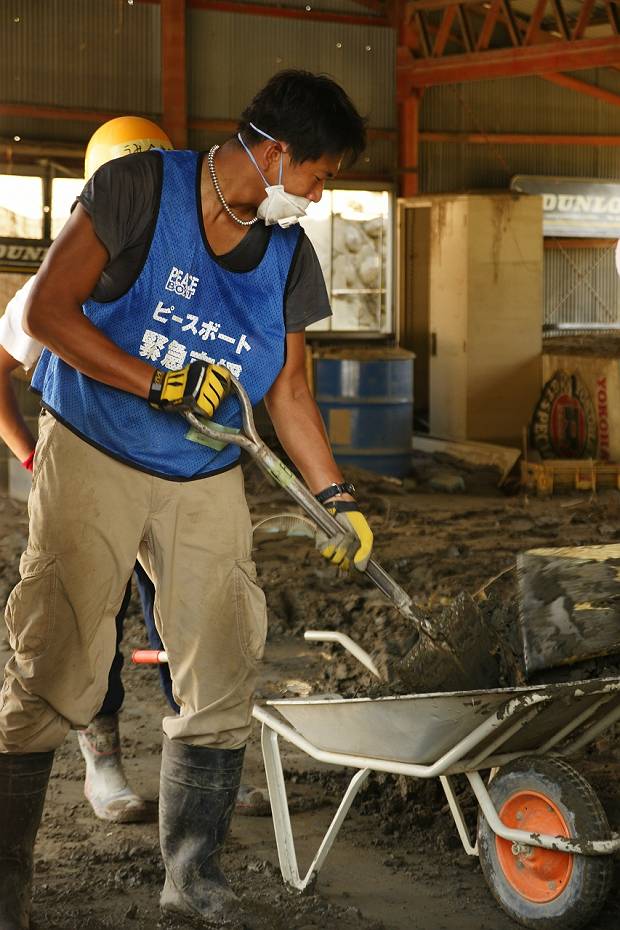
Takano Motoyuki, the volunteer staff that was one of the first three to enter Wakayama with Suzuki.
Q: It was 5 days after the typhoon hit, and the three of you went to Wakayama to analyse the needs for aid and volunteer work. Please tell what was done up to this point, September 8.
A: Not only Shingu city, but the surrounding towns such as Nachikatsura or Kiho in Mie prefecture have very elderly populations. They were all digging out their homes from the mud and carrying away the destroyed belongings that scattered the streets. The need for humanitarian aid was evident. Many roads and bridges along the Kumano river were damaged and it took almost two hours to travel between Shingu city and the town of Kumanogawa. There was no need, however, for water. Fresh water from the mountains provided the people with the water they needed far before the piping system could be repaired. That was when I was in awe at how mother nature could at times be so kind, yet so cruel.
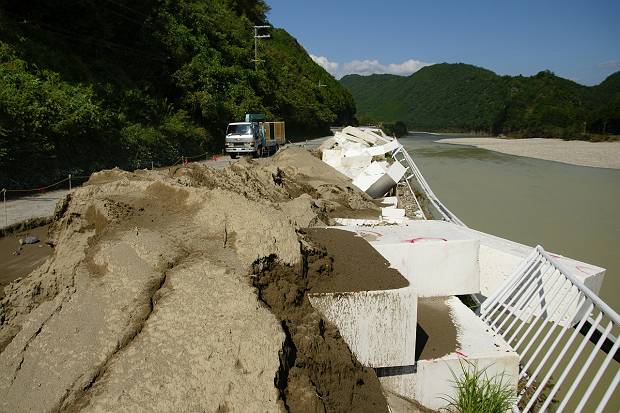
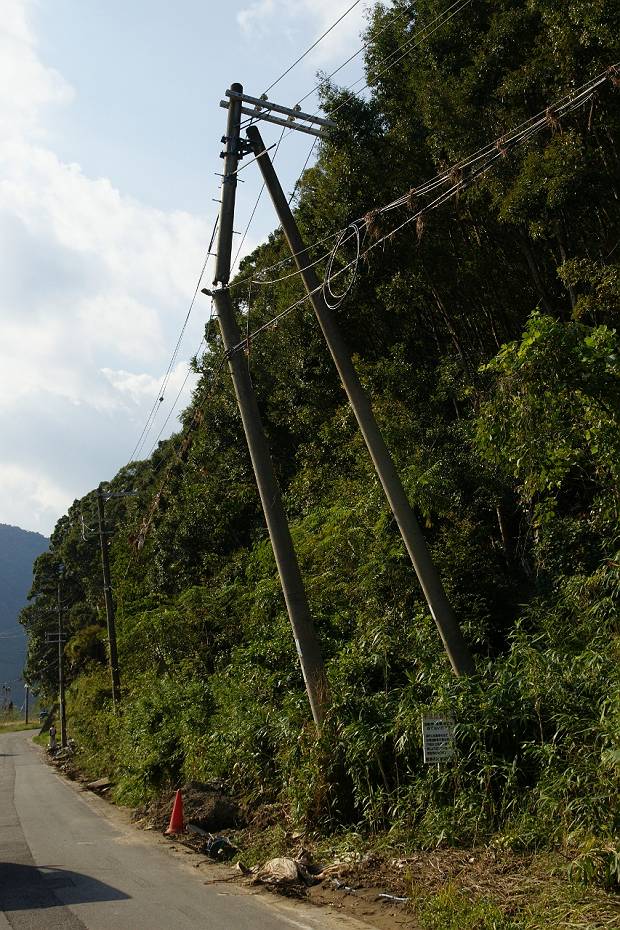
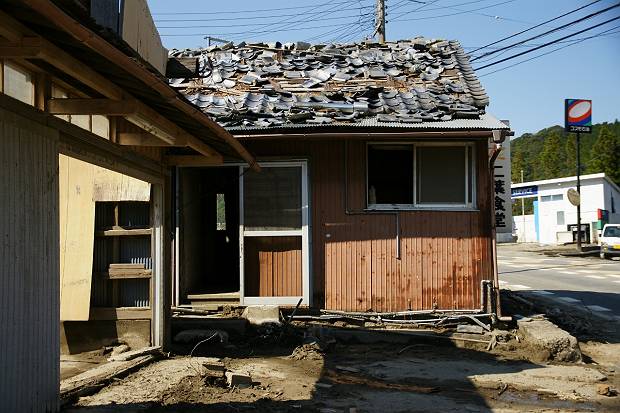
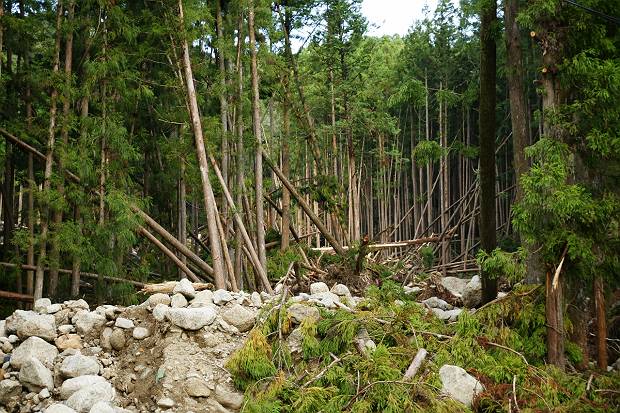
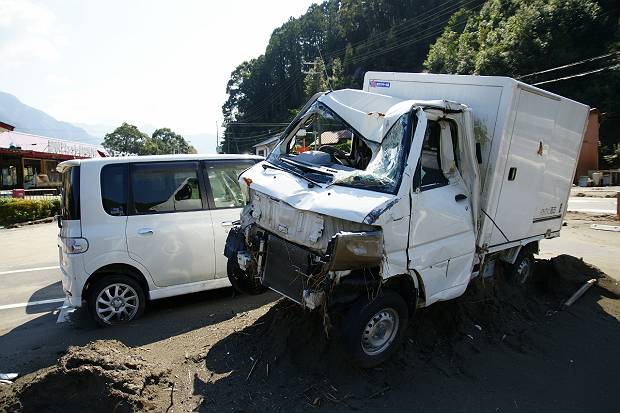
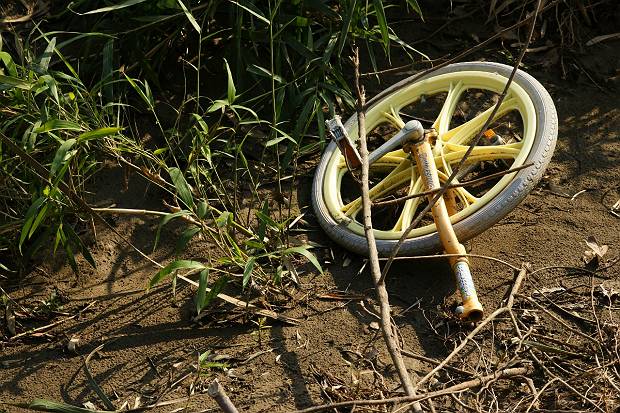
Below: The flood raised the water level above the bridge. The town of Kumanogawa was besieged by a maximum water level of 20 meters.
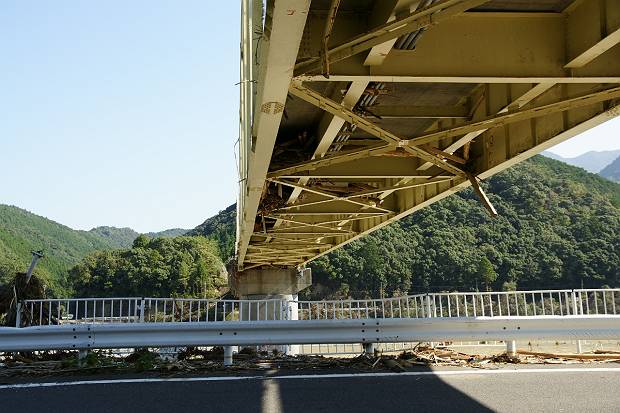
We talked with the Shingu City Social Welfare Council proposing to send in young energetic volunteers, but were turned down. In the beginning, the city said they only required the help of local volunteers. Even after the local disaster volunteer center sought aid from other prefectures, the Social Welfare Councildid not openly accept this. I believe they are not accustomed to NGOs or NPOs, and are cautious towards outsiders. This beginning is what set our minds to make sure we affirm a strong connection with the locals.
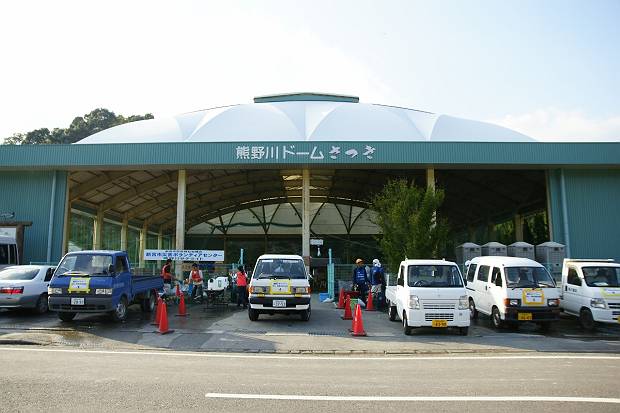
This is the Kumanogawa Satellite Volunteer Center that was set up in the Kumanogawa Dome Satsuki.
Q: Here in Tokyo, people realised that Wakayama needed aid when they saw the results of the water damage. It must have been hard not being able to connect with the local people in the beginning.
A: It was only from September 11 that Peace Boat finally was able to start volunteer activities in the town of Kumanogawa in coordination with Tokyo. In the year 2005, the town of Kumanogawa was merged and became part of Shingu city, and so the volunteer center had to wait for the approval of the city. Finally our volunteer center, the Kumanogawa Satellite, began to function on September 14.
I’m sure the civil authorities and all staff were busy and in mayhem after the disaster, but every single day counts in the field. Local authorities and communities must re-evaluate the system to accept volunteers. It is in such times of jeopardy that we must come together and know what to do.

Oguchi Elementary School, used from September 25 as a volunteer facility.
Q: You were also active volunteering in Ishinomaki. How did the damage of the typhoon seem to you?
A: Many homes were completely destroyed, others just barely standing. Some houses seemed unscathed but behind their walls were actually demolished or full of water or mud. These are similar factors to the Tohoku region as well, however due to the fact that many elderly people live in these regions, I can imagine it would have taken much more longer if they had been alone. It is commonly said that it takes two weeks to recover from flooding. In this case, it took two months even with the the extra aid of volunteers. That is how devastating it was.
The amount of attention also differed from the disaster in the Tohoku region. Some organizations from Osaka (in the same region of Japan) came to Kumanogawa, but Peace Boat was the only organization to continue volunteer relief on a longer scale. Organizations that Peace Boat has worked with side by side in Ishinomaki such as the Ishinomaki Disaster Recovery Assistance Council, the Nippon Foundation and On the Road also came and helped in Nachikatsura and in Mie prefecture, however only a small number of organizations continued their aid.
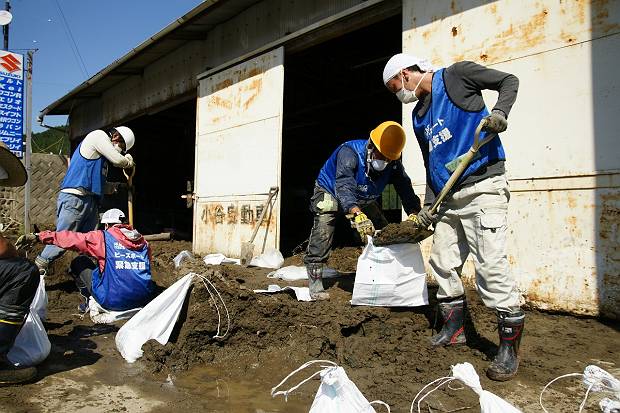
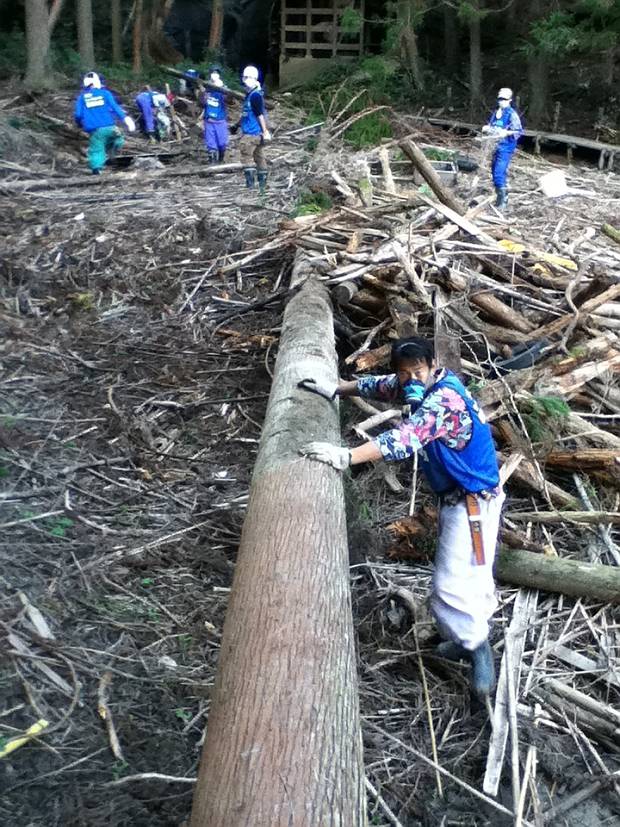
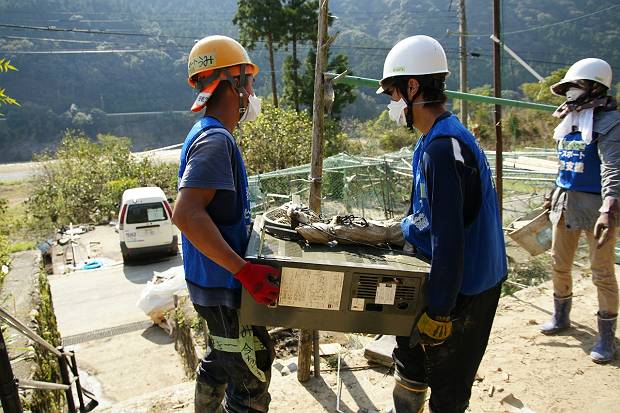
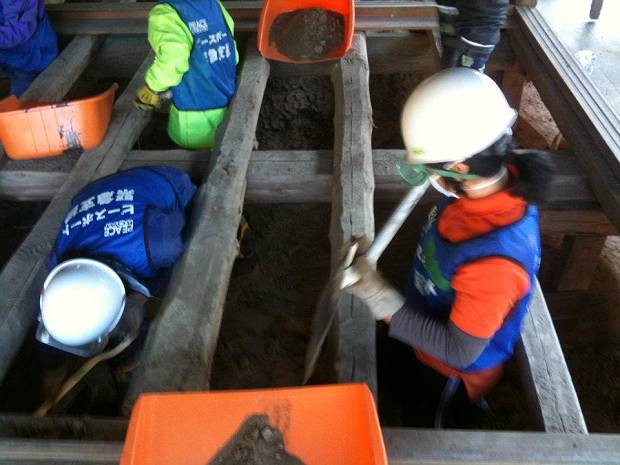
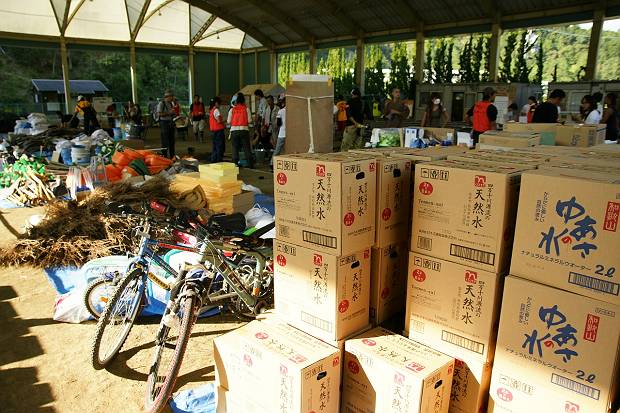
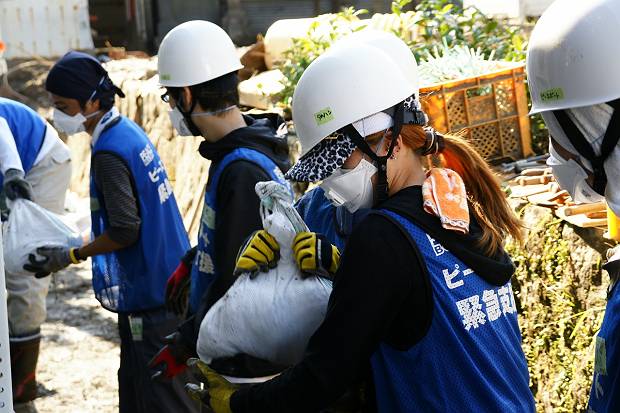
Q: After hearing the reports in Tokyo, Peace Boat tried to gather volunteers but the responses were indeed weak. In the end we had a total of 369 volunteers, who worked a total of 1735 days volunteering. What kind of people were these volunteers?
A: Half of the volunteers had experience in volunteer work in Ishinomaki. Their responses were swift, especially in September. I’m sure they knew what was needed in Wakayama, and also knew that they could make a difference. They were a great help. Also, many students wishing to volunteer participated from the Kansai region through Youth for 3.11. These students actually wanted to help more during the Tohoku crisis, however could not due to the distance. They were very fervent in helping Wakayama in any way they could.
One can never know when or where a natural disaster will hit, so that is why we need to create a more effective system in major cities to gather such youths for future aid.
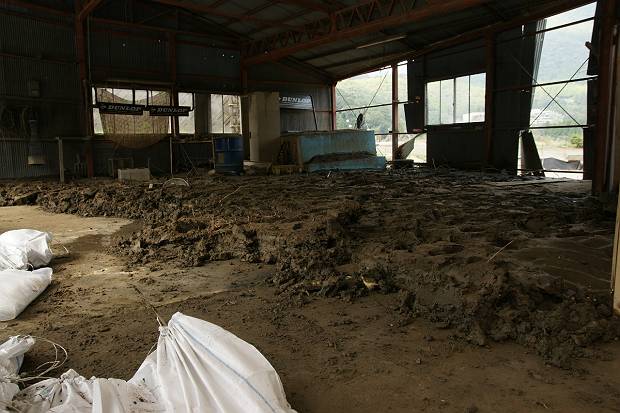
Above: Kotani Motors before volunteers entered / Below: Kotani Motors after the volunteers finished their work

Q: Please tell us what took place during those 2 months.
A: The majority of our activities were to support the local disaster volunteer center and cleaning. At times there were approximately 200 individual volunteers at the Kumanogawa Satellite volunteer center, including volunteers from Shingu city. At the volunteer center we managed equipment and other items. This is a process also done in Ishinomaki. The “cleaning” refers to many actions such as carrying out household items, digging out all dirt from the houses and other areas, and using high water-pressure machinery. We cleaned in 161 various cases. We also cleaned out the toilets the volunteers and locals used.
Everyday we collaborated with the staff at the volunteer center, keeping records on all requirements. Requirements differed in timing, and many other small details. We were also able to understand when to shift aid from local households to public areas such as schools, facilities and streets. I believe the data collected during our work there will help future volunteering in areas affected by water hazards.

Suzuki Takayuki holding a map showing all activity done in Kumanogawa.
Q: Please tell us how you feel or if there is anything you would like to share after these two months.
A: I will definitely return to Kumanogawa. I am of course curious about how Kumanogawa will recover but moreover, it was a beautiful place with mountains, a river, great drinking water, beautiful stars, and amazing people.
I would also like to thank all the volunteers for being there. Thank you everyone at the administrator’s office, the Shingu City Disaster Volunteer Center, and thank you everyone living in the town of Kumanogawa. The last meal was incredible. I will return.
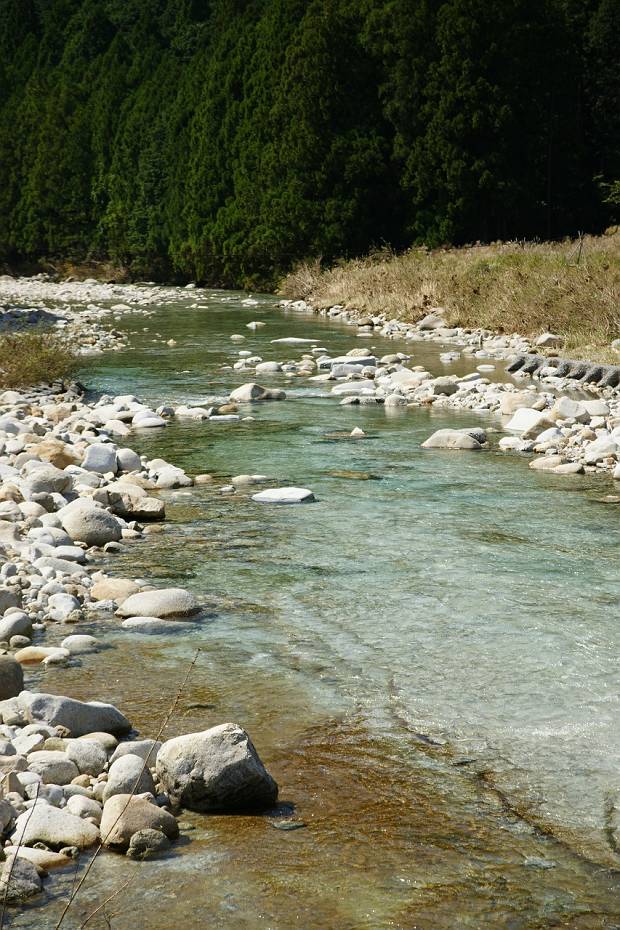
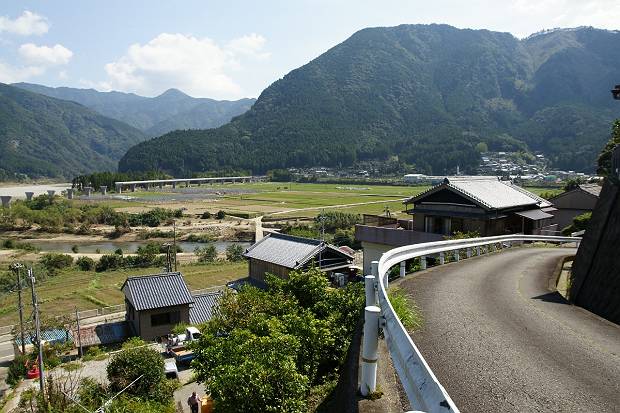
* Takayuki Suzuki returned to Ishinomaki this week, where many volunteers are still needed. There are many ways to participate such as delivering newspapers to temporary housing, helping the revival of local industries, and more. There is a definite need for more volunteers for both the weekly dispatches and short term dispatches during the week. One person can help achieve much. We ask for your cooperation.
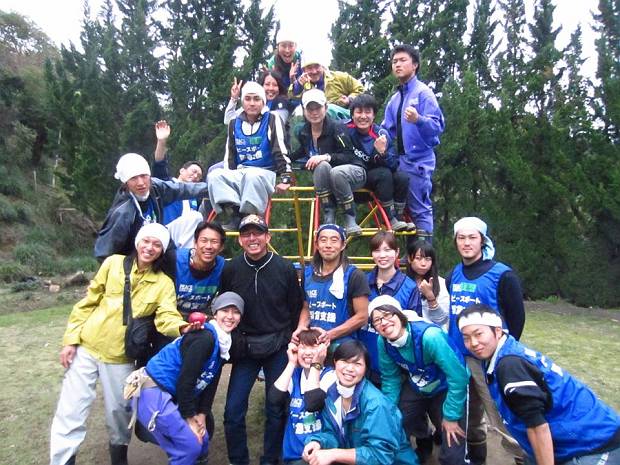
Photos: Nakamura Mitsutoshi
TAGS: cleanup • Disaster Relief • Japan • Peace Boat • peaceboat • Relief • typhoon • Volunteer • Volunteers • wakayama


